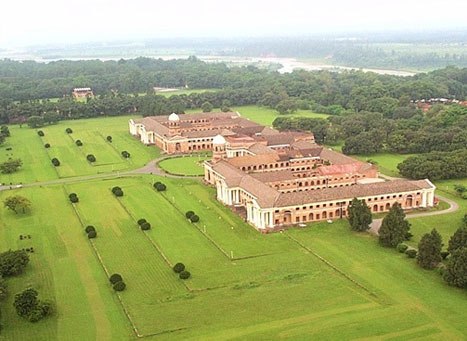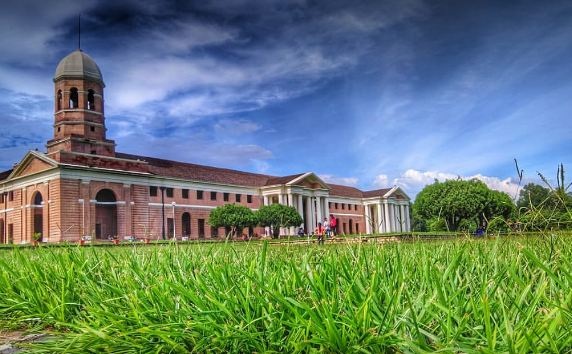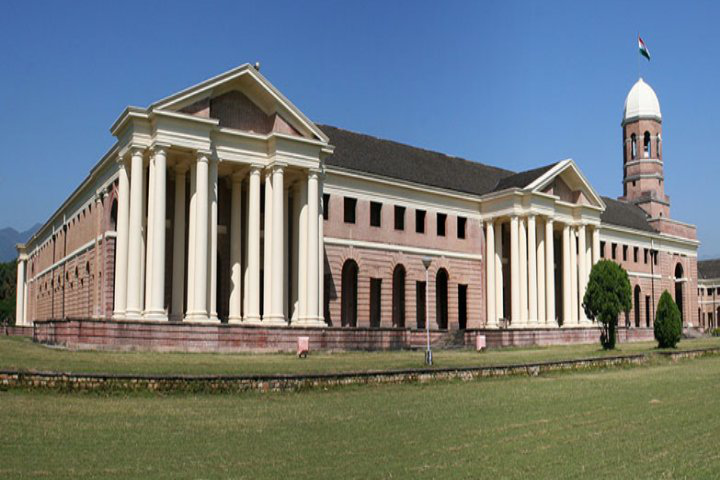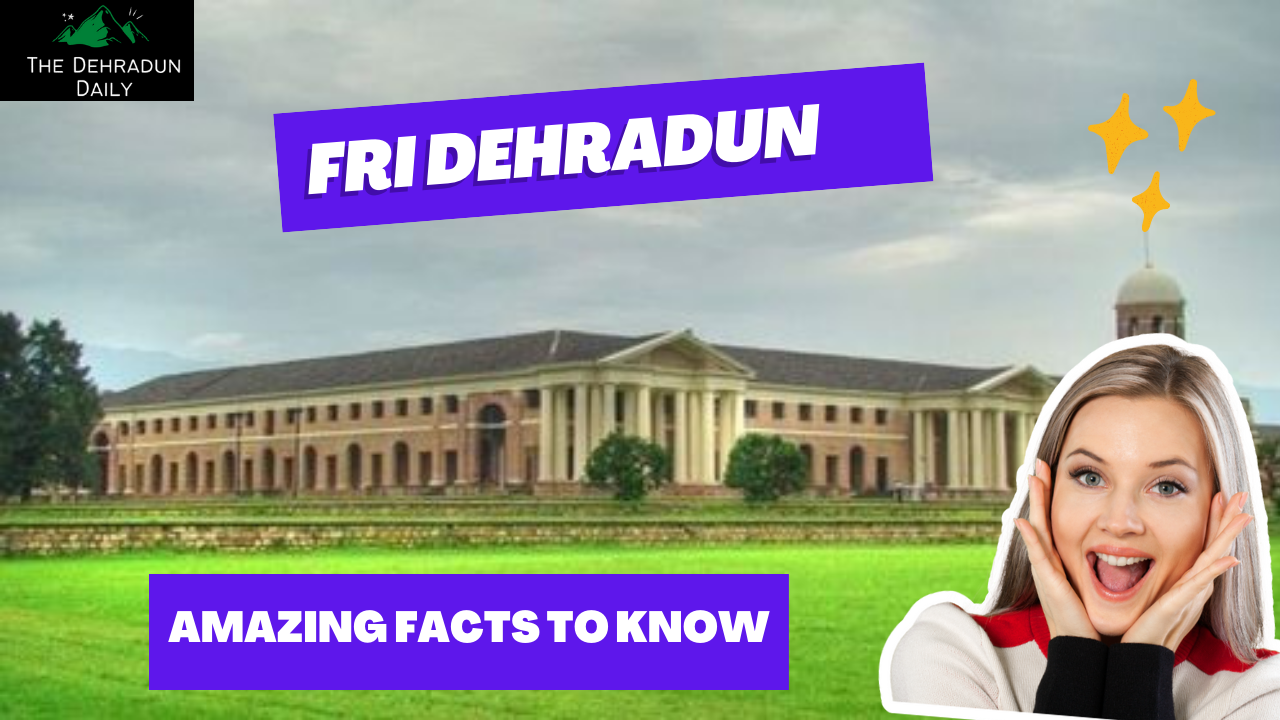About Forest Research Institute, FRI Dehradun
The Forest Research Institute (FRI) Dehradun, which was founded in 1906 as the Imperial Forest Research Institute, boasts stunning colonial-style architecture. The main building, which is a National Heritage and was designed in 1929 by C.G. Blomfield in the style of Greek and Roman architecture, is the center of attention.
The 2000 acres of breathtakingly beautiful, tranquil, green fields that make up the Forest Research Institute (FRI) are lined with rows of trees. Long walks are popular among visitors in FRI’s calm and beautiful surroundings. In the fields of FRI, one may see a broad variety of plants and trees from all around the world. The scenery in FRI is also attractive to photographers.

On the FRI site, visitors can also enjoy a picnic area, the Botanical Garden, in addition to the main building and green space. FRI Dehradun is home to some of the world’s most well-known forest museums. It comprises six museums dedicated to entomology, pathology, silviculture, timber, social forestry, and non-wood forest products.
Forest Research Institute Dehradun History
The sahebs had long been captivated by the Indian woodlands, which Rudyard Kipling romanticized in The Jungle Book. Under the direction of renowned German forester Dietrich Brandis, the British established The British Imperial Forest School in 1878, bringing their scientific quest to this field.
The science of producing, managing, using, protecting, and repairing forests on the subcontinent was invented by Brandis. To reestablish it as the Imperial Forest Research Institute and to train forest officers for the British Civil Services, was done in 1906. Architect C.G.
Blomfield was commissioned to design the famous academy’s new, equally magnificent structure. Actually founded in 1878 as a modest Dehradun forest school to teach forest rangers, the FRI has its roots there today. The foundation of the current FRI was built on this institution, which the federal government took over in 1884 and renamed the Imperial Forest School.
In India and throughout the whole subcontinent, the history of FRI is connected with the advancement and growth of scientific forestry. Forest officials and forest rangers across the nation received instruction from the institute. As a result, following independence, the government gave it the name Indian Forest Institute and Colleges. The government later in 1988 brought FRI and its research facilities.

The Indian Council of Forestry Research & Education (ICFRE), which is once more under the Ministry of Environment, Forests and Climate Change of the Government of India, was given administrative control over it. In 1991, FRI was recognized by the government as a designated university by the University of Grants Commission.
Forest Research Institute Architecture
The Forest Research Institute (FRI), founded in 1906 as the Imperial Forest Research Institute, was located near Chandhbagh on Mall Road (now the site of Doon School). Around 1923, the current campus was relocated to a considerably larger one. Following it, work on the new buildings began.
The main edifice, designed in Greek and Roman architecture by C.G. Blomfield, was dedicated in 1929 by viceroy Freeman Freeman-Thomas, 1st Marquess of Willingdon. A national heritage site, it is presently. The internationally renowned and one of the oldest institutions of its kind is the Forest Research Institute Dehradun.
The history of FRI is essentially identical to the advancement and development of scientific forestry across the entire subcontinent, not only in India. The main building of FRI is a spectacular edifice that combines the Greco-Roman and Colonial styles of architecture, with a plinth area of 2.5 hectares, and is built over a lush green estate stretched over 450 hectares with the outer Himalaya as its backdrop.
The structure was once recognized as the largest brick building in the world by the Guinness Book of Records. The institute boasts a well-developed infrastructure that is on par with the best of its kind anywhere in the world, including fully equipped labs, a library, a herbarium, arboreta, a printing press, and experimental field areas for performing forestry research. The building’s main façade is over 1,000 feet long.
Its wide width is further emphasized by the repeated patterns in which the bricks and mortar are placed, which are broken up by stripes of molding. Although there are many traces of Lutyen’s influence, the building stands out due to its immense scale. There are six major courtyards that are encircled on all sides by spacious hallways. Domed towers on either side of the central entryway, which is set back, flank it.

This gives the structure a commanding presence over the acres of lush grass around it. The Tons River serves as the campus’ northern boundary, and a wide central roadway cuts between the lawns. Six museums are housed in the structure: the Entomology Museum, the Social Forestry Museum, the Pathology Museum, the Silviculture Museum, the Timber Museum, and the N.W.F.P Museum.
It is fascinating to follow the development of forestry into a serious field, one of the contributions of the British Raj to India, even though the exhibits require upgrading. Dioramas of flood plains, images of India’s various forest types, and a cross-section of a 700-year-old Deodar tree are among the exhibit’s highlights.
The walls are adorned with cabinets that are fully stocked with books and artifacts from the building’s 1926 inauguration. They provide a lot of light on how the FRI has spent nearly a century meticulously cataloging Indian forests.
FRI Dehradun Ticket Price
For visitors to the campus and the FRI Museum, FRI Dehradun requires an access ticket. There is no need to purchase a ticket for the museum if all you want to do is explore the FRI Dehradun campus. The FRI entry ticket is available at the main entrance gate. Only ₹15 per person will be required for admission. You can also use the museum entry ticket inside the FRI campus, which is close to the museum if you want to visit the FRI museum. The cost of each ticket is ₹50.

How to reach FRI Dehradun?
In front of Dehradun’s Vasant Vihar neighborhood, on Chakrata Road, is where you’ll find FRI Dehradun. From the railroad station and ISBT bus stop, it is simple to take a direct city bus, Vikram, or auto.
Only 6 kilometers separate FRI from the railway station, 9 km from ISBT Dehradun, and 34 km separate it from the nearest airport with air service, Jolly Grant. By bus or car, it takes only 10 to 15 minutes to get there. From the train station or bus stop, Bus and Vikram will only charge a person 15 to 20 rupees.

